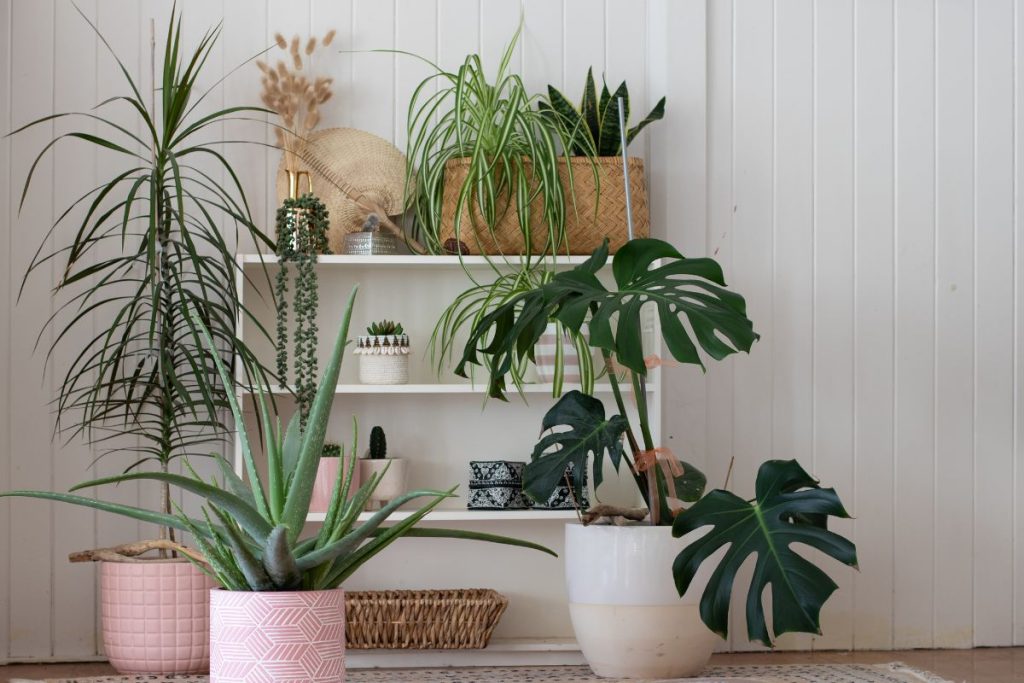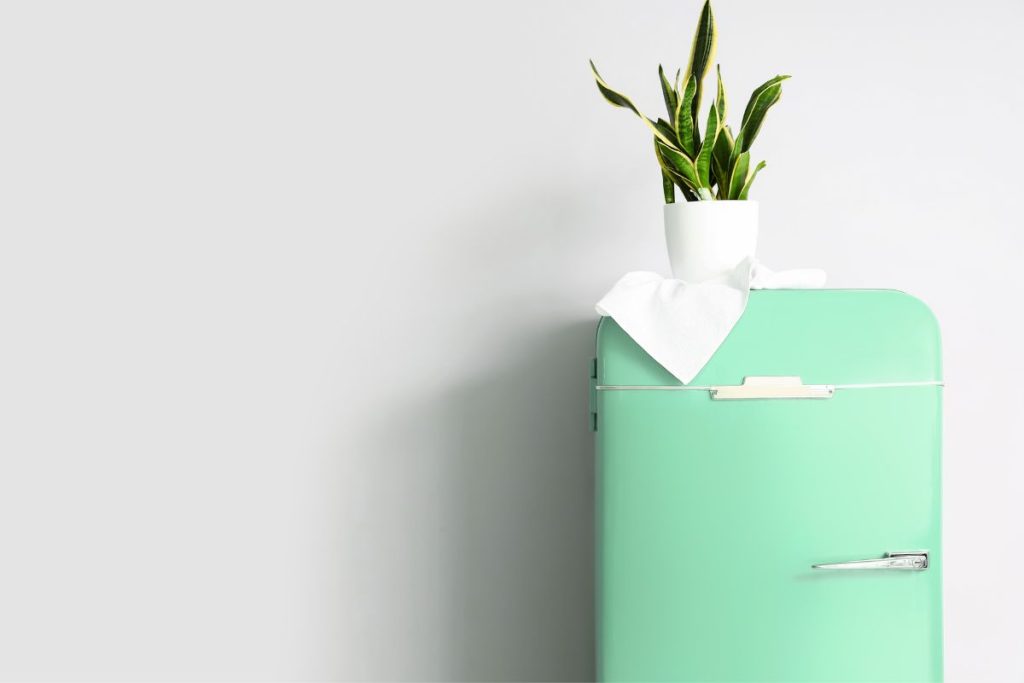Are you worried about how to keep your beloved indoor plants warm and cozy during the cold winter months? Don’t despair! With just a few simple steps, you can ensure that your plants will stay vibrant and healthy all winter long. Learn how to keep indoor plants warm in winter so they can thrive!

Contents
How To Keep Indoor Plants Warm In Winter
You can keep your indoor plants warm during the winter by moving them to the warmest room in your home, bubble wrapping them for added insulation, running grow lights at night, using heat mats and placing them on top of the fridge. Taking these steps will ensure that your plants stay healthy and comfortable even when temperatures drop outside.
Move Indoor Plants To The Warmest Room
To ensure your indoor plants stay warm in winter, move them to the warmest room in your house. This should be the room that receives the most sunlight during the day and should have minimal exposure to cold drafts. To help keep an even level of sunlight for each plant, rotate their positions every few days.
If you’ve got a budget, investing in a grow tent is also a great option as it can maintain warmth and protect against frost. The sealed structure allows you to better manage and monitor its temperature and humidity levels without extra cleaning work caused by the plants. Keeping your plants at a constant temperature will help them thrive so find out which room is the warmest and keep them there!
Bubble Wrap The Plants
Wrapping layers of bubble wrap around the plant pot can help retain heat and protect against frost. Bubble wrap acts as a barrier to keep the warmth in, much like a double-glazed window. It’s an easy way to create an insulating layer for your plants – this will ensure they don’t suffer from extreme temperatures during the colder months.
Make sure you cover each pot completely and that there are no gaps or holes in the insulation. Doing so will provide optimal protection and help maintain warm, healthy conditions for your indoor plants throughout winter. Be sure to check regularly that the bubble wrap is secure and remains free from tears or damage which could compromise its effectiveness. With proper care, this simple yet effective method will keep your plants warm while also helping them thrive!
Run Grow Lights At Night
By leveraging the working heat of grow lights at night, you can help protect your plants from cold spells and save money on electricity. LED grow lights generate little heat, but they still provide some warmth to indoor plants without stressing them out. This added warmth is especially beneficial during late-night and early-morning hours when electricity rates are typically cheaper.
However, this method only works if you have an enclosed growing area as otherwise the heat will be easily dispersed by the cold outside air. To ensure the safety of your plants, make sure to use a timer so that your lights turn off after their allotted time has passed.
Use Heat Mats
Try using a heat mat to provide extra warmth for your houseplants during the colder months. Heat mats are thin sheets of plastic with heating elements inside, and they’re easy to use – just plug them in and place the plants on top. This is an effective way to keep your plants warm without spending too much money. Plus, it’s safe and you don’t have to worry about potential hazards such as fire or electrical shock. Your plants will appreciate the extra bit of protection from the cold!
Take care to ensure that no water gets onto the mat while it is plugged in, as this could cause a short circuit or other damage. With a little extra effort, you can keep your indoor plants healthy all year round.
Place Plants On Top Of The Fridge

You may think it’s an unusual idea to keep your indoor plants warm in winter, but the experts say to place them on top of the fridge! That way they’ll absorb some heat that’s naturally produced by the appliance. Wrapping the pots in bubble wrap is also recommended for added warmth. This simple solution will help keep your plants safe and healthy without any extra cost. So don’t be afraid to move those houseplants up high – just make sure you take necessary precautions like wrapping them in bubble wrap first!
Invest In A Heater
Investing in a heater can help ensure your plants stay toasty during the cold winter months. It is important to find a heater that is safe and fits your budget. Look for one with an automatic shut-off feature that will kick in if the temperature gets too high, or if it’s tipped over accidentally. Additionally, make sure you purchase one that has been tested and certified by safety organizations, as this will provide additional peace of mind when using it around your home. If you have any questions about heater safety, consult with an expert before making a purchase. With the right maintenance and care, your indoor plants can survive even the chilliest temperatures!
How To Water Indoor Plants In Winter
Before watering your indoor plants in winter, stick your finger one inch into the soil to see if it feels moist – if it does, there’s no need to water them. This is an important step that will help you avoid overwatering and killing your beloved plants. Low humidity can also cause their soil to dry out much faster so be mindful of this when deciding whether or not to water them. To increase the moisture in the air around your houseplants, run a humidifier or put them in the kitchen or bathroom near a window.
Additionally, grouping plants together will raise their humidity levels and make maintenance easier. You can do this by moving pots closer together or combining similar plants into one pot. Lastly, adding a pebble tray filled with water under the pot will give your plants extra humidity without allowing them to sit in standing water – just remember to change it regularly! If you have more sensitive plants, consider setting up a mini indoor greenhouse where you can easily keep tabs on their environment and provide additional grow lights for light-starved plants during winter months.
How Much Light For Plants In Winter?
Adequate lighting is essential for houseplants during winter, as they can grow leggy if not provided with enough light. Thus, it’s important to be aware of the light requirements of each plant so you can provide what they need. Depending on the type of plant, direct sunlight from a south-facing window may not be necessary. You may even consider adding an artificial grow light in order to help your plants stay healthy and lush.
Fortunately, there are plenty of affordable options when it comes to indoor plant lights. A single grow light is perfect for small plants, while fluorescent shop lights with special bulbs can be used for larger ones. To make sure your plants get the exact amount of lighting they need throughout the winter months, use an outlet timer to regulate the turn-on time and duration of your lights.
Remember that safety should always come first when dealing with electrical appliances like timers or grow lights. Make sure they’re unplugged when not in use and keep away from any flammable materials or liquids that could cause a fire hazard. With this in mind, providing adequate lighting for your indoor plants during winter will ensure they look great all season long!
Fertilizing and Repotting Indoor Plants In Winter
Don’t forget to stop fertilizing houseplants in early fall and wait until the spring to start feeding them again with a weak dose of liquid fertilizer. It’s also important to avoid repotting your plants during the winter unless it is absolutely necessary. Doing so can cause stress, which could harm your plants during this season. If you find that your soil dries out quickly or that the plant is becoming pot-bound, then you may want to consider repotting it. Be sure to do some research before attempting this task, as improperly done it can lead to further damage.
For most houseplants, it is not recommended to fertilize during the winter months since they are dormant and don’t need extra nutrients at this time. In addition, transplanting them can trigger new growth which may be weak and leggy due to cold temperatures. To keep your indoor plants safe and healthy during the winter season, make sure that you don’t give them any extra food or attempt a repotting unless absolutely necessary.
Conclusion
Wrapping up, there’s no need to be intimidated by winter when it comes to your indoor plants. With a few simple steps like keeping them warm, watering them properly, and providing the right amount of light, you can keep your plants healthy and happy—even in the coldest weather. And here’s an interesting statistic: over 30 million homes in the United States have at least one indoor plant! So don’t let winter freeze out your green thumb—with enough care and attention, you can enjoy beautiful houseplants all year round.
